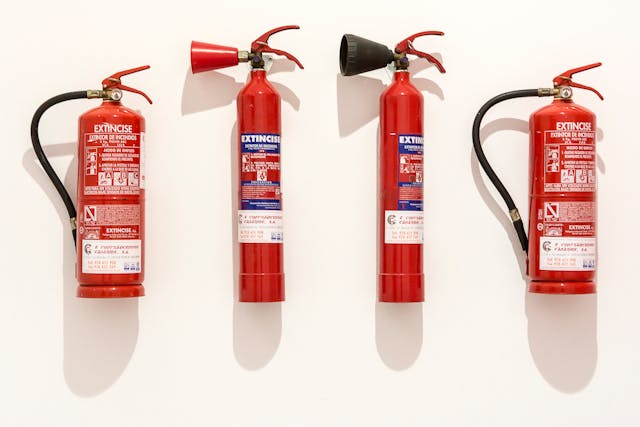Leveraging Technology to Streamline Asset Management: The Role of Automated Tools in Fire Extinguisher Compliance for Businesses
In a business environment, efficient asset management is not just necessary but a strategic imperative. The fire extinguisher is a vital asset that often goes unnoticed yet is critical in ensuring safety and compliance within any business operation. Maintaining compliance with these essential devices entails rigorous tracking and adhering to a fire extinguisher inspection checklist. This needs regular inspections and timely maintenance, tasks that can quickly become cumbersome without the right tools. Fortunately, the dawn of technological advancements offers a beacon of hope. Automated tools have emerged as pivotal allies in streamlining asset management, particularly for fire extinguisher compliance, revolutionizing how businesses approach this critical responsibility.
Leveraging technology to enhance asset management involves making processes more efficient, reducing errors, and ensuring compliance with the least friction possible. Automated tools powered by software solutions can transform the traditionally manual, logbook-dependent process of fire extinguisher maintenance into a streamlined, efficient, and virtually error-free operation. This transition not only saves time but also significantly mitigates risks associated with non-compliance.
The Necessity of Fire Extinguisher Compliance
Compliance with fire safety regulations is a legal and moral obligation for businesses. Regular inspections, maintenance, and documentation are imperative to ensure fire extinguishers are operational in an emergency. The stakes are high, and the safety of employees, customers, and property protection are hanging in the balance.
However, keeping track of inspection schedules and maintenance records and ensuring every fire extinguisher meets legal standards can be daunting for businesses. It's even more difficult for those operating across multiple locations.
The Advent of Automated Solutions
Enter the age of automation, where software solutions designed for asset management have begun to redefine the approach toward fire extinguisher compliance. These tools, like fire extinguisher inspection software, are built to monitor, track, and manage the entire lifecycle of each fire extinguisher within an organization's inventory. From scheduling regular inspections to logging maintenance activities and generating compliance reports, automated tools shoulder the burden of administrative tasks, allowing businesses to focus on their core operations.
One key benefit of adopting automated tools for fire extinguisher compliance is eliminating human error. Manual record-keeping is prone to inaccuracies, an issue that automated solutions effortlessly address by providing an accurate and instantly accessible digital trail. Furthermore, these tools significantly enhance the visibility of each asset's compliance status, enabling businesses to swiftly rectify potential issues before they escalate into costly non-compliance penalties.
Streamlining Inspections and Maintenance
With built-in reminders and scheduling capabilities, automated tools ensure that inspections are conducted on time and maintenance activities are not overlooked. These tools can provide instant notifications to designated personnel when an inspection is due or when a fire extinguisher fails an inspection, ensuring that corrective actions are taken promptly.
This proactive approach to asset management represents a quantum leap from the reactive, often haphazard methods that predominated before the advent of technology. Automated tools empower businesses to establish a structured and standardized workflow for fire extinguisher compliance management, resulting in improved efficiency, reduced downtime, and enhanced overall safety.
Data-Driven Decision Making
Beyond compliance, automated tools offer businesses invaluable insights into their asset management practices. By aggregating and analyzing data, organizations can identify trends, such as which models of fire extinguishers require frequent repairs or the locations with the highest incidence of compliance issues.
With this information, businesses can make informed decisions about future purchases and optimize maintenance schedules. They can also implement targeted training programs for staff, further embedding a culture of safety and compliance.
A Path Forward
Integrating technology into asset management, specifically for fire extinguisher compliance, is not just about adherence to regulations; it’s about transforming a routine task into a strategic advantage. Businesses that adopt automated tools demonstrate a commitment to safety and compliance and position themselves as forward-thinking, efficient, and responsible entities.
The role of technology in this domain is poised for further growth, with the potential for integration with other safety systems, predictive analytics for anticipating maintenance needs, and even the use of artificial intelligence to enhance decision-making processes. The possibilities are expansive, and the future of asset management, particularly for critical safety equipment like fire extinguishers, is undeniably within the realm of automated, technology-driven solutions.
Final Thoughts
Leveraging technology to streamline asset management, specifically for fire extinguisher compliance, represents a significant leap forward for businesses. Adopting automated tools simplifies compliance and elevates safety and efficiency, underpinning businesses' resilience and integrity in an era where both are increasingly under scrutiny. The evolution from manual processes to automated solutions is a transformation that transcends convenience, embedding safety and compliance into the fabric of business operations in an unparalleled manner.

